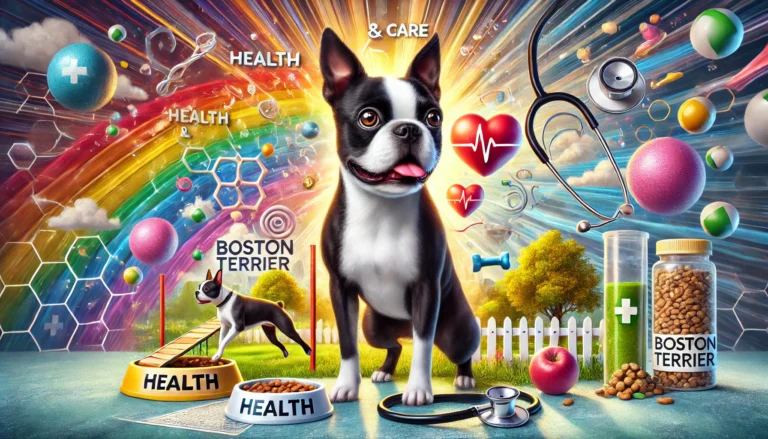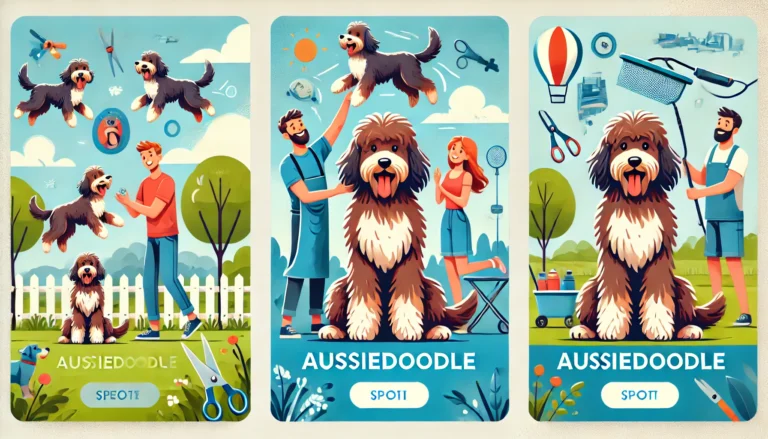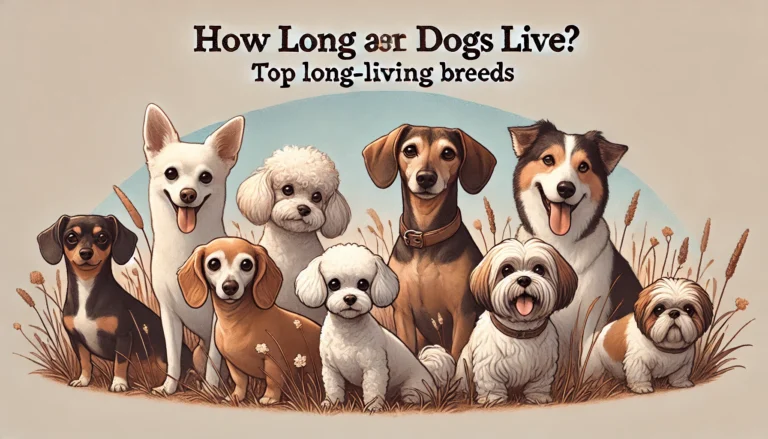Pug Dog Health and Care: A Comprehensive Guide for Owners

Introduction to the Pug Dog
The Pug Dog is one of the most cherished breeds, instantly recognizable by its wrinkled face, short snout, and expressive eyes. Originating in ancient China, Pugs have long been valued as loyal and affectionate companions. While their playful nature and small size make them ideal for families and individuals alike, Pugs also have specific health needs that require attention. This guide will walk through essential Pug Dog health and care, covering common health concerns, grooming routines, and daily care tips to help your pug thrive.
Understanding the Pug Dog Breed: Key Traits and Temperament
Physical Characteristics of the Pug Dog
The Pug Dog breed is a small, muscular dog with a short, glossy coat that sheds moderately year-round. Pugs are known for their distinct round eyes, curly tails, and compact body. With a typical weight range between 14-18 pounds and an average lifespan of 12-15 years, Pugs are a long-term commitment, requiring dedicated care and regular health check-ups.
Personality and Temperament of the Pug Dog
Affectionate, playful, and sociable, the Pugs is an excellent choice for families, seniors, and singles alike. Pugs thrive on human interaction and tend to form strong bonds with their owners. They are friendly toward children and other animals, but Pugs can exhibit stubbornness, so consistent and gentle training is key.
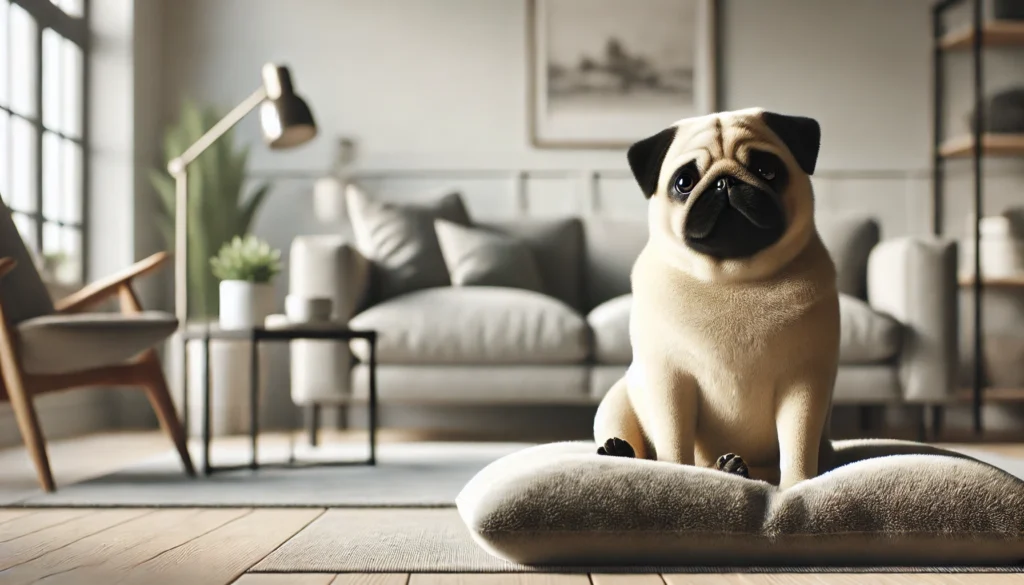
Health Issues Commonly Affecting the Pug Dog Breed
Due to their unique structure and genetics, Pug Dogs are predisposed to certain health concerns. Below are common health challenges for Pugs and the best ways to address them.
1. Brachycephalic Syndrome in Pug Dogs
- Overview: The Pug Dog is a brachycephalic breed with a short, flat face. This can lead to breathing difficulties, especially during physical activity or in hot weather.
- Care Tips: Avoid strenuous exercise, especially in warm climates. Keep Pugs cool to prevent overheating. If breathing issues worsen, consult your vet for possible treatment options.
2. Eye Problems in Pug Dogs
- Overview: With their large, round eyes, Pugs are prone to eye conditions like corneal ulcers, dry eye, and proptosis.
- Care Tips: Monitor your Pug’s eyes for signs of redness or discharge. Gentle, vet-approved eye drops can help with dryness, but consult a veterinarian for any serious concerns.
3. Hip Dysplasia in Pug Dogs
- Overview: While more common in large breeds, Pug’s can also develop hip dysplasia, causing joint discomfort and mobility issues.
- Care Tips: Regular exercise and a balanced diet are crucial for maintaining a Pug’s weight. Your veterinarian may recommend supplements or treatments if symptoms arise.
4. Obesity in Pug Dogs
- Overview: Due to their compact size, Pug’s are at higher risk of obesity, leading to joint strain, heart disease, and diabetes.
- Care Tips: Control food portions and offer high-quality, balanced meals. Incorporate daily walks and playtime to help maintain your Pug’s ideal weight.
5. Skin Fold Dermatitis in Pug Dogs
- Overview: The facial wrinkles of the Pug can trap moisture, leading to infections if not cleaned regularly.
- Care Tips: Clean your Pug’s folds with a damp cloth and dry thoroughly. Consider wipes that are gentle on their sensitive skin to prevent irritation and infection.
Do You Know
UTIs in dogs occur when bacteria, such as E. coli, infiltrate the urinary tract, including the bladder, kidneys, and urethra. These infections may cause inflammation, pain, and frequent urination, and in some cases, they can lead to more severe health issues if left untreated.
Daily Care Tips for Keeping Your Pug Dog Healthy
1. Proper Diet and Nutrition for Pug Dogs
- Feeding Tips: Feed your Pug high-quality dog food formulated for small breeds, focusing on protein and low fillers. Avoid overfeeding and control treats to prevent weight gain.
- Special Considerations: If your Pug exhibits food allergies, consider a hypoallergenic diet. Always consult your vet for dietary adjustments.
2. Exercise Needs of the Pug Dog
- Exercise Guidelines: The Pug requires daily exercise but should avoid intense physical activities due to breathing limitations. Short, gentle walks and mental stimulation through toys are ideal.
- Precautions: Avoid outdoor activities in extreme heat or cold, as Pug’s are prone to overheating and respiratory issues.
3. Grooming and Maintenance for Your Pug Dog
- Brushing: Pugs have short coats that shed year-round. Weekly brushing can help manage shedding and promote a healthy coat.
- Bathing: Bath your Pug every 4-6 weeks with a mild shampoo. Dry their skin folds thoroughly to prevent infections.
- Nail Care: Trim your Pug’s nails every 3-4 weeks. Long nails can cause discomfort and impact their gait.
- Dental Care: Dental hygiene is essential for Pugs. Brush their teeth weekly and use dental treats to prevent plaque buildup.
4. Skin Fold Care in Pug Dogs
- Cleaning Routine: Regularly clean your Pug’s skin folds with a gentle wipe. Dry thoroughly to avoid moisture buildup.
- Signs of Infection: Look for signs of irritation or discharge, as these can indicate skin fold dermatitis.
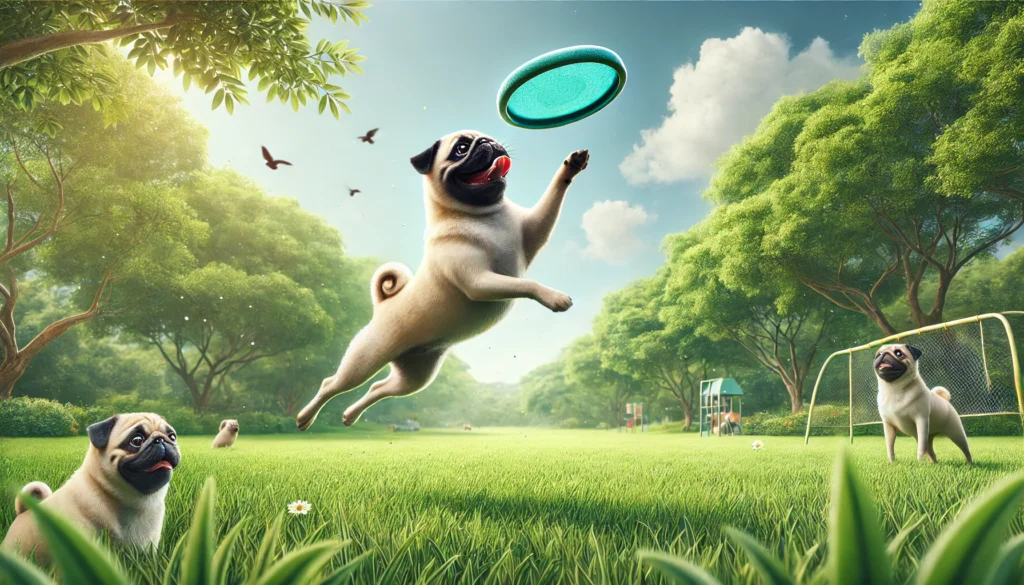
5. Training and Socialization of the Pug Dog
- Positive Reinforcement: Pugs respond well to treats and praise, making positive reinforcement an effective training method.
- Consistency is Key: Use consistent commands and keep training sessions brief. Due to their shorter attention spans, Pugs benefit from 5-10 minute sessions.
- Avoiding Punishment: Instead of scolding, redirect your Pug when they make mistakes. This gentle approach prevents anxiety and fosters trust.
Preventing Health Problems in Pug Dogs
Prevention is the best strategy for keeping your Pug healthy. Here are key preventive measures to ensure your Pug lives a long, happy life:
- Regular Vet Visits: Schedule routine vet check-ups to monitor your Pug’s overall health and catch potential issues early.
- Weight Management: Obesity is common in Pugs and can exacerbate other health problems. Maintain a healthy diet and regular exercise routine.
- Temperature Regulation: Pugs are sensitive to temperature extremes. Keep them cool during hot days and consider a sweater in cold weather.
- Eye Protection: Use a harness instead of a collar to avoid pressure on the neck, which can strain the eyes. Keep their environment safe from sharp objects that could injure their eyes.
Conclusion: Embracing Life with Your Pug Dog
Caring for a Pug requires understanding their specific needs and being proactive about their health. With a balanced diet, proper grooming, regular exercise, and a lot of love, your Pug will thrive and bring joy to your life. Remember that Pugs are more than just pets—they’re loyal companions who enrich our lives with affection and fun.
By staying attentive to their health, Pug owners can create a happy, safe environment for their pets, ensuring they enjoy a long and fulfilling life.
Are Pugs a good dog?
Pugs are excellent companion animals known for their friendly and affectionate nature. They adapt well to various living environments, making them great pets for families, singles, or seniors. Despite their small size, Pugs have a cheerful demeanor and a big personality, enjoying both playtime and cuddles. Their loyalty and love for human interaction make them wonderful companions, although their need for constant companionship means they do best in environments where they won’t be left alone for long periods.
What is Pugs’ weakness?
Pugs face several breed-specific weaknesses primarily due to their brachycephalic (flat-faced) structure. This includes breathing difficulties, susceptibility to heatstroke, and dental issues due to their crowded teeth. Their large, bulging eyes are prone to various ailments, and their deep wrinkles need regular cleaning to prevent infections. Additionally, Pugs can easily become overweight if their diet and exercise are not properly managed, which can lead to further health complications.
Is a Pug a Chinese dog?
Yes, Pugs originate from China, where they were esteemed pets of the emperors and guarded with great care by soldiers. Bred to sit on the laps of royalty during the Song dynasty, they are one of the oldest breeds of dogs. Their role was so significant that they were often considered a treasured secret of China, not exported until the 16th century when they were traded to European countries and became popular among Western royalty as well.
Are Pugs intelligent?
Pugs possess a unique type of intelligence that makes them quite perceptive to their owners’ emotions and capable of complex social interactions. They are not known for their obedience intelligence like some working breeds but excel in adaptive intelligence. However, their playful and sometimes stubborn nature can challenge training efforts, requiring patience and creative techniques to engage them effectively.
Are Pugs lazy or active?
Pugs typically display a balanced blend of laziness and activity. They enjoy short bursts of play and are particularly fond of games that involve interaction with their owners. However, they are equally content to spend much of their day sleeping and relaxing. Due to their brachycephalic nature, Pugs are not suited for vigorous exercise and prefer indoor activities or short walks in cool weather to stay healthy.
What is the smartest dog?
The Border Collie is widely regarded as the smartest dog breed, known for its incredible problem-solving capabilities and ability to learn and execute a wide variety of commands. These dogs excel in agility and obedience training, often outperforming other breeds in competitive dog sports. Their intelligence and high energy make them ideal for active families or individuals who can provide them with plenty of mental and physical stimulation.
What is the main cause of death in Pugs?
The leading causes of death in Pugs are typically associated with their brachycephalic nature, leading to complex respiratory and neurological issues. Pug Dog Encephalitis (PDE), an inflammatory brain disease unique to Pugs, along with respiratory difficulties, are prominent causes. Heart issues and cancer also contribute significantly to their mortality, highlighting the need for conscientious health care and regular veterinary check-ups.
Is a Pug a toy dog?
Yes, Pugs are classified as toy dogs due to their small size and role primarily as companion animals. This group is characterized by breeds that are ideally suited for indoor living and close companionship, fitting the Pug’s characteristics perfectly. Their amiable nature and relatively low exercise needs make them excellent pets for those living in apartments or smaller living spaces.
Is Pug a loyal dog?
Pugs are extremely loyal and affectionate, forming deep bonds with their family members. They are known for their desire to be close to their owners at all times and can be protective of their loved ones. Their loyalty combined with their friendly disposition makes them excellent companions who consistently seek to please their owners and stay by their side.
Which dog lives the longest?
Small dog breeds generally live longer than larger breeds, with the Chihuahua often cited as one of the longest-living dog breeds. These tiny dogs can live anywhere from 15 to 20 years, sometimes longer, especially when provided with optimal care including regular veterinary visits, a healthy diet, and plenty of love and attention.
Can Pugs be left alone?
Pugs can manage being alone for short periods, but they greatly prefer the company of their owners. Known for their dependence on human companionship, they can suffer from separation anxiety if left alone too frequently or for extended periods. To mitigate stress, providing a stimulating environment with toys and ensuring a consistent routine can help keep a Pug calm when alone.
What food is best for Pugs?
A balanced diet tailored to their specific needs is crucial for Pugs. High-quality commercial or home-cooked meals rich in lean proteins and low in fats can help manage their weight. Small, frequent meals are recommended to prevent obesity and reduce the risk of gastric issues. Special attention should be given to their dietary needs to accommodate their susceptibility to allergies and skin sensitivities.
Which is the best dog for home?
The best dog for a home depends on the household’s lifestyle and needs. Breeds like Labrador Retrievers, Golden Retrievers, and Beagles are popular choices due to their adaptable nature and friendly disposition. These breeds typically do well with children and adapt well to various living environments, making them ideal for many families.
Are pugs difficult to train?
Pugs are not inherently difficult to train but do require consistent and patient training methods. They can be stubborn, so positive reinforcement techniques such as treats and praises are most effective. Early socialization and obedience training can help harness their intelligent and playful nature into good behavior.
Why are pugs so special?
Pugs have a special appeal due to their distinctive appearance, with expressive faces and charming demeanor. They are particularly valued for their strong social skills and emotional sensitivity, making them excellent companions. Their ability to adapt to various living situations and their constant affection towards their owners further enhance their special status among dog breeds.
Do pugs love to sleep?
Pugs do enjoy a good amount of sleep, typically lounging and napping throughout the day. They are known for their love of comfort and can often be found snuggling in cozy spots around the home. This trait, combined with their easygoing personality, makes them perfect companions for individuals seeking a low-energy pet.


